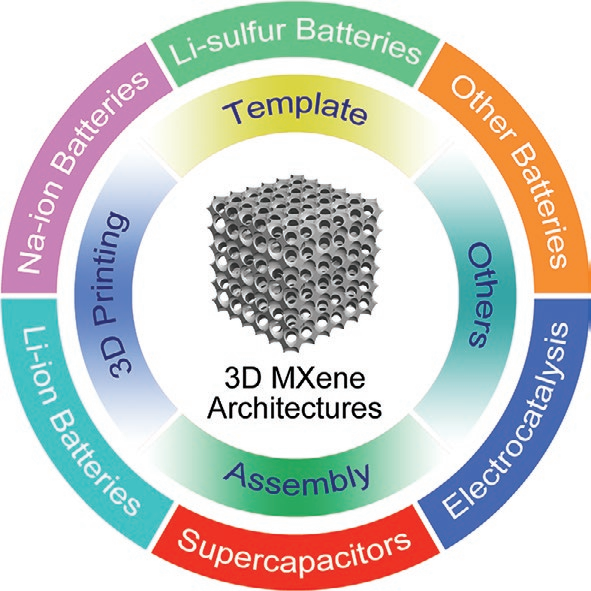3D MXene Architectures for Efficient Energy Storage and Conversion
QQ Academic Group: 1092348845
Detailed
2D transition metal carbides and/or nitrides (MXenes), by virtue of high electrical conductivity, abundant surface functional groups and excellent dispersionin various solvents, are attracting increasing attention and showing competitive
performance in energy storage and conversion applications. However, like other2D materials, MXene nanosheets incline to stack together via van der Waalsinteractions, which lead to limited number of active sites, sluggish ionic kinetics,and finally ordinary performance of MXene materials/devices. Constructing 2D MXene nanosheets into 3D architectures has been proven to be an effective strategy to reduce restacking, thus providing larger specific surface area, higher porosity, and shorter ion and mass transport distance over normal 1D and 2D structures. In this review, the commonly used strategies for manufacturing 3D MXene architectures (3D MXenes and 3D MXene-based composites) are summarized, such as template, assembly, 3D printing, and other methods. Specialattention is also given to the structure–property relationships of 3D MXenearchitectures and their applications in electrochemical energy storage and conversion, including supercapacitors, rechargeable batteries, and electrocatalysis.Finally, the authors propose a brief perspective on future opportunities and challenges for 3D MXene architectures/devices.
Summary
This review summarizes the recent progress in the preparation of 3D MXene architectures and their application in electro
chemical energy storage and conversion. Various preparation methods, including template, assembly, 3D printing, and otherroutes, have been developed for manufacturing different kinds of 3D MXenes and their nanocomposites. Since the restacking of MXene nanosheets is effectively inhibited in these 3D architectures, more active sites are exposed for electrochemical reactions. The 3D porous structure and high electrical conductivity also offer interpenetrating pathways for highly efficient electrons and ions transport. As a result, 3D MXene architectures exhibit enhanced performance in terms of electrochemical energy storage and conversion compared to their bulk counter parts and even with other 2D materials.

- Previous: 3D MXene Architectures
- Next: MXene breakthrough: Na


 mxene academic
mxene academic